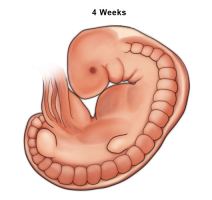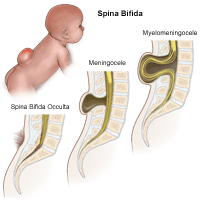Folic Acid for a Healthy Baby2
What is folic acid?
Folic acid1, or folate, is a B vitamin. The word folate comes from folium the Latin word for leaf. Folate occurs naturally in food, particularly in dark, green leafy vegetables, while folic acid is the synthetic form supplied in multivitamins and foods fortified with folic acid. Researchers discovered folate’s importance in preventing anemia about 70 years ago, but only in recent years have they learned of the link between folate deficiency and certain birth defects.
Why is folic acid important?
Most people have heard about the importance of folic acid for women during their childbearing years. But what’s all the fuss about? Getting enough folic acid can reduce the risk for neural tube defects (NTDs). Folic acid only helps, however, if it’s taken before getting pregnant and during the first trimester of pregnancy.
What is the role of folic acid in preventing birth defects?
A critical period of fetal development occurs during the early weeks of pregnancy, often before a woman is aware she is even pregnant.

Illustration of a human embryo at 4 weeks. (Click to Enlarge)
One of the earliest structures to form is the neural tube. This structure is flat at first, but rolls into a tube by only one month after conception to become the brain and spinal cord.
Without enough folic acid, the cells in this structure can’t function or grow properly and the tube doesn’t close. The spine, skull, and brain can be affected, with open or closed abnormalities.

Click Image to Enlarge
Two of the most common types of NTDs are spina bifida and anencephaly. Spina bifida is a condition in which a portion of the spinal cord and the surrounding structures develops outside, instead of inside the body. Anencephaly is a condition in which the brain and skull bones do not form properly and results in parts of the brain being absent.
Researchers have found that the risk for NTDs is significantly lowered when a woman gets extra folic acid in addition to a healthy diet from one month before conception through two to three months after becoming pregnant.
What are the sources for folic acid?
Folate occurs naturally in many foods, such as dark, leafy green vegetables, legumes (dried beans and peas), citrus fruits (oranges, bananas, melons), and most berries, but often it’s not enough. To help women get the amount they need, the FDA requires folic acid to be added to enriched breads, breakfast cereals, pastas, rice, and other grains.
The developing baby needs folate to produce healthy new cells, and to make DNA and RNA (genetic material), which are cell building blocks. Folate also is essential to form normal red blood cells and certain amino acids. These are vital functions during pregnancy and infancy, when cells rapidly divide and grow.
How much folic acid is recommended for women of childbearing age?
Women who may become pregnant should take a supplement containing 400 mcg of folic acid. To help reduce your risk, take the folic acid supplement in addition to eating foods naturally rich in folate and those fortified with folic acid. Because some women will need additional folic acid, it’s important to talk with your health care provider about the amount that is right for you.